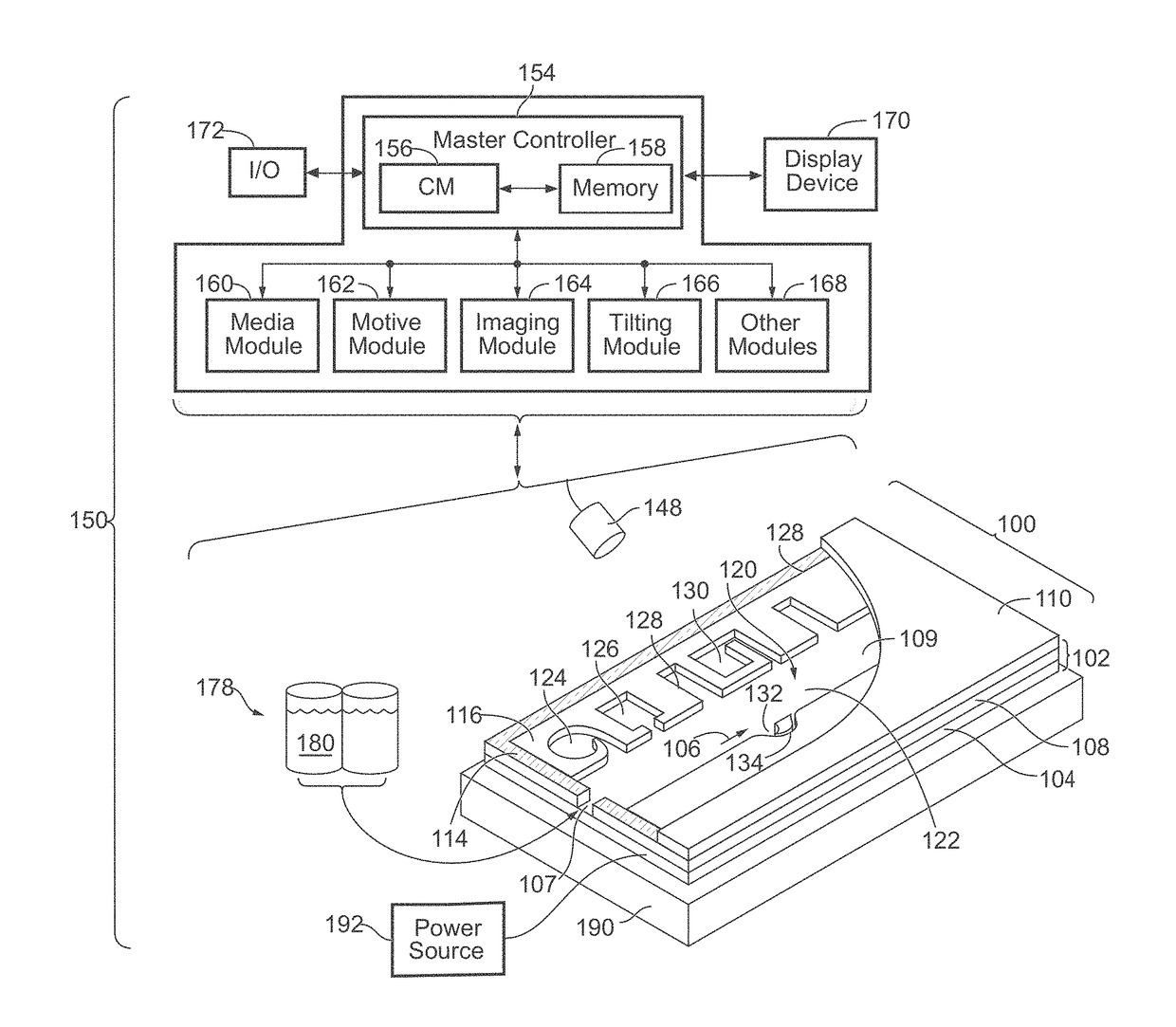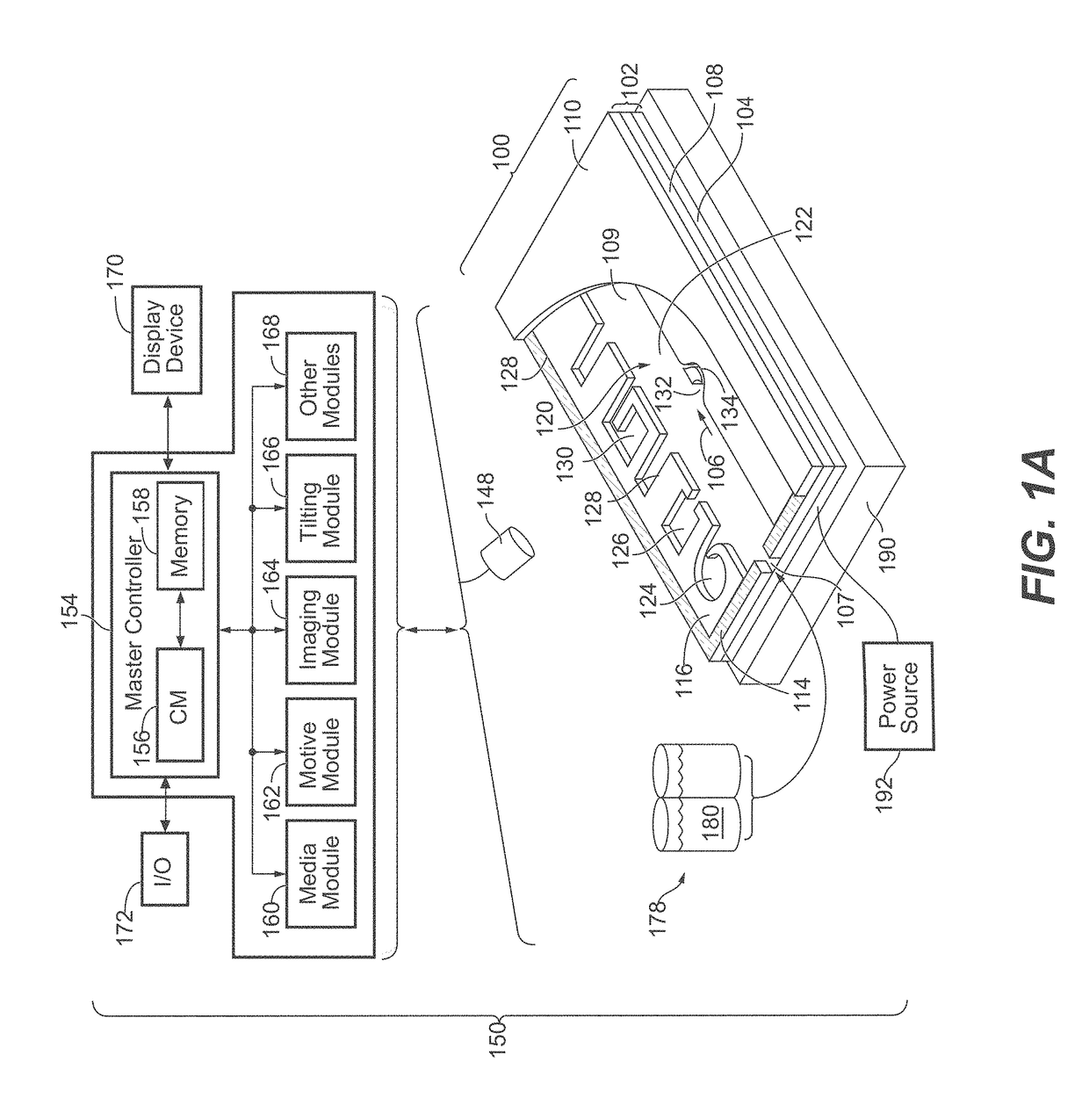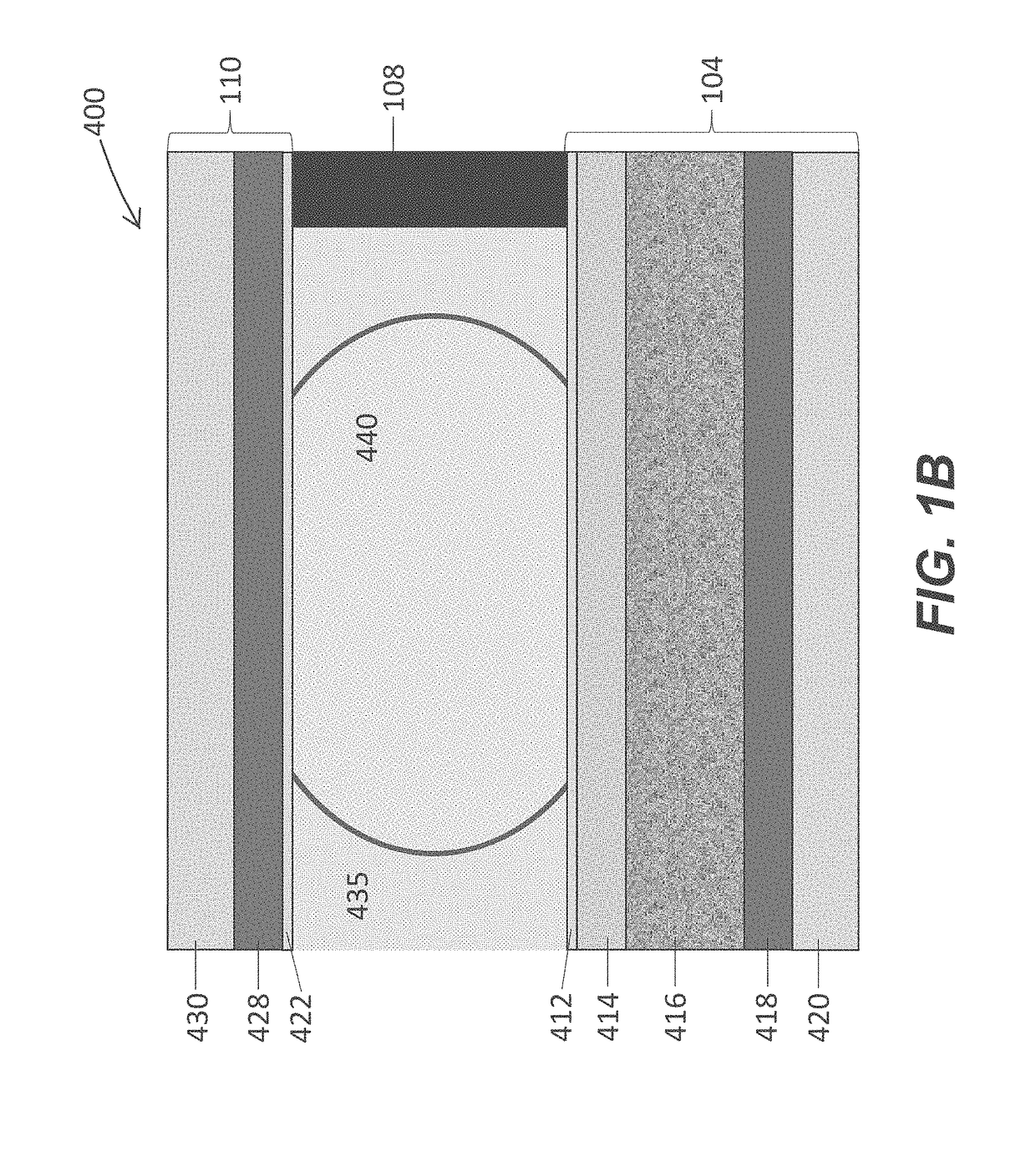Microfluidic apparatus having an optimized electrowetting surface and related systems and methods
a microfluidic and electrowetting surface technology, applied in the direction of microorganism fixing/supporting apparatus, fluid controller, laboratory glassware, etc., can solve the problems of inability to scale or implement additional functionality, and the present solution for electrowetting is extremely limited in natur
- Summary
- Abstract
- Description
- Claims
- Application Information
AI Technical Summary
Benefits of technology
Problems solved by technology
Method used
Image
Examples
example 1
on of an Electrowetting Microfluidic Device Having Modified Interior Surfaces
[0312]A microfluidic device (Berkeley Lights, Inc.) having a base that included an electrode activation substrate having a semiconductive layer of photosensitive silicon and a dielectric layer having an upper surface of alumina, a cover having a glass support with an ITO electrode, and microfluidic circuit material of photopatterned silicone separating the base and the cover, was treated in an oxygen plasma cleaner (Nordson Asymtek) for 1 min, using 100 W power, 240 mTorr pressure and 440 sccm oxygen flow rate. The plasma treated microfluidic device was treated in a vacuum reactor with trimethoxy (3, 3, 4, 4, 5, 5, 6, 6, 7, 7, 8, 8, 9, 9, 10, 10, 11, 11, 12, 12, 13, 13, 14, 14, 15, 15, 16, 16, 16)-nonaicosafluorohexadecyl)silane (0.3 g, details of synthesis as described in U.S. Provisional Application 62 / 410,238, filed Oct. 19, 2016) in a foil boat in the bottom of the vacuum reactor in the presence of magn...
PUM
 Login to View More
Login to View More Abstract
Description
Claims
Application Information
 Login to View More
Login to View More - R&D
- Intellectual Property
- Life Sciences
- Materials
- Tech Scout
- Unparalleled Data Quality
- Higher Quality Content
- 60% Fewer Hallucinations
Browse by: Latest US Patents, China's latest patents, Technical Efficacy Thesaurus, Application Domain, Technology Topic, Popular Technical Reports.
© 2025 PatSnap. All rights reserved.Legal|Privacy policy|Modern Slavery Act Transparency Statement|Sitemap|About US| Contact US: help@patsnap.com



